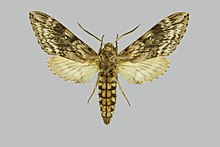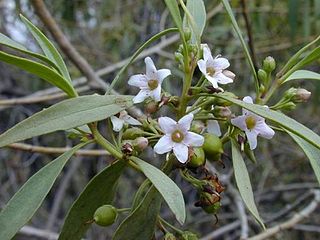
Myoporum is a genus of flowering plants in the figwort family, Scrophulariaceae. There are 30 species in the genus, eighteen of which are endemic to Australia although others are endemic to Pacific Islands, including New Zealand, and one is endemic to two Indian Ocean islands. They are shrubs or small trees with leaves that are arranged alternately and have white, occasionally pink flowers and a fruit that is a drupe.
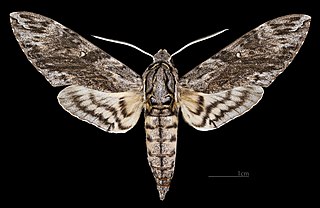
Agrius godarti is a moth in the family Sphingidae which is found inland in the northern half of Australia, including Queensland and New South Wales.

Manduca caribbeus is a moth of the family Sphingidae. It is known from Haiti and the Dominican Republic.
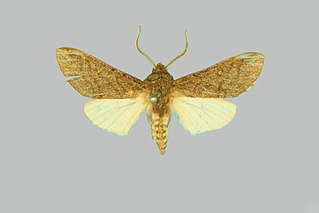
Hopliocnema is a genus of moths in the family Sphingidae, containing only one species, Hopliocnema brachycera, which is known from Queensland, Victoria and New South Wales.

Tetrachroa is a genus of moths in the family Sphingidae, containing only one species, Tetrachroa edwardsi, which is known from Queensland and New South Wales.

Leucomonia is a genus of moths in the family Sphingidae, containing only one species, Leucomonia bethia, which is known from New South Wales and Queensland.

Daphnusa ocellaris, the durian hawkmoth, is a species of moth of the family Sphingidae.
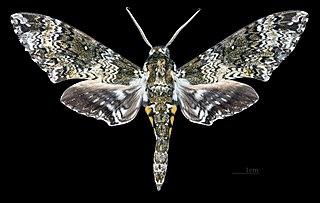
Manduca sesquiplex is a moth of the family Sphingidae. It is known from Mexico, Costa Rica and Nicaragua.

Manduca scutata is a moth of the family Sphingidae.
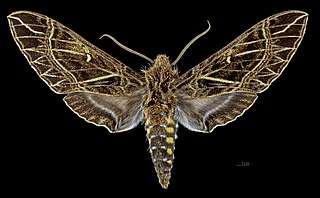
Euryglottis aper is a moth of the family Sphingidae.
Psilogramma exigua is a moth of the family Sphingidae. It is known from western Australia.
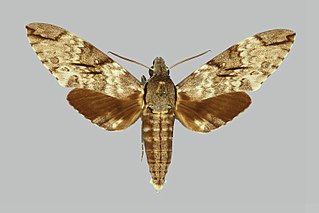
Psilogramma papuensis is a moth of the family Sphingidae. It is known from New Guinea and north-eastern Australia.
Psilogramma argos is a moth of the family Sphingidae. It is known from Western Australia, the Northern Territory and northern Queensland.

Psilogramma casuarinae, the Australasian privet hawk moth, is a moth of the family Sphingidae. The species was first described by Francis Walker in 1856. It is known from New South Wales, the Northern Territory and Queensland, all in Australia.
Psilogramma gloriosa is a moth of the family Sphingidae. It is known from Queensland, Australia. This species is currently believed to be a subspecies of Psilogramma menephron.
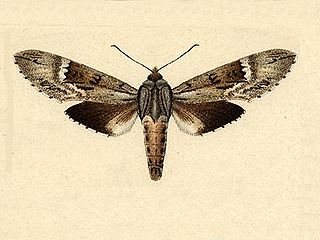
Nannoparce poeyi is a moth of the family Sphingidae. It is known from Mexico, Cuba, Jamaica and the Dominican Republic.
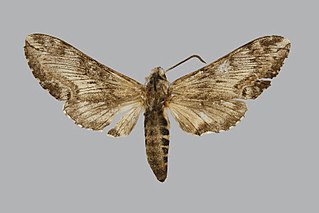
Neogene albescens is a moth of the family Sphingidae. It is known from Argentina.
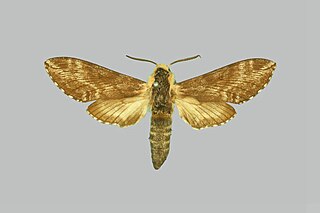
Neogene corumbensis is a moth of the family Sphingidae. It is found in Argentina and Bolivia.
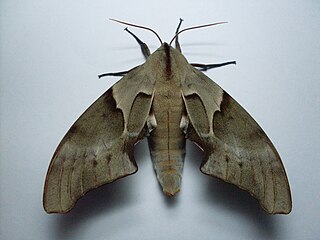
Coequosa australasiae is a species of moth of the family Sphingidae.
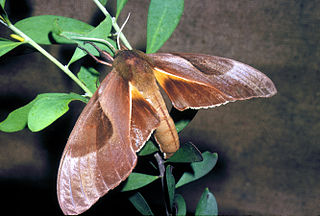
Coequosa triangularis, the double-headed hawk moth, is a moth of the family Sphingidae.
